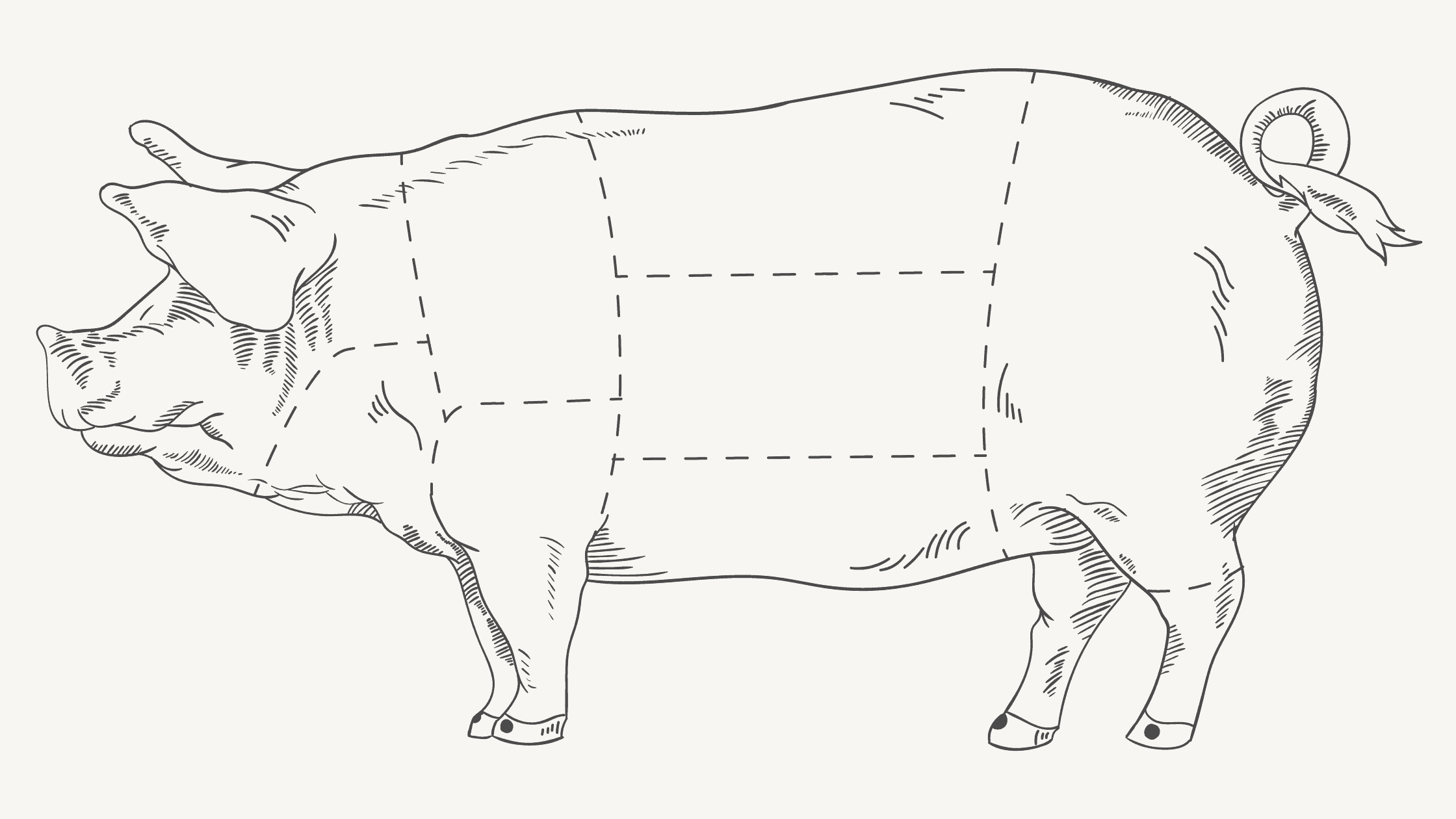A guide to the different cuts of pork and how to prepare them! Learn where each cut is located and ideas to make them taste fabulous.
Bringing Home The Bacon
Isn’t that how the saying goes? I can see why money is synonymous with the salty, crispy, and smoky slices: it might as well be currency! Pork products are widely used across many different cuisines, prized for the flavor they add to the dishes they grace. Or, when prepared properly, stand on their own just fine (here’s looking at you, baby back ribs!).
This article is dedicated to educating you about the various cuts of pork, along with ideas for how to prepare them. Read on to learn more and get cooking!

Cuts of Pork
Head
Pork head is exactly that: the head of a pig. While there certainly are recipes out there to cook it whole, pig cheeks (or jowls) are often used to slow roast or braise.
Neck
Though this area has little meat, it’s known more so for the bones. Neck bones are often used in slow-simmered soups and stews, yielding rich flavor to the dishes they’re in.
Boston Butt
This portion is situated between the head and loin of the pig: its shoulder area. In this area, you’ll find the Pork Shoulder cut (aptly named) which gets plenty of use from the animal meaning it will be more muscular and less fatty. This cut will require low and slow cook times, and is an excellent option for the slow cooker or pressure cooker.
The Boston Butt is also located in this area, which is a fattier cut of meat. Similar to the Pork Shoulder, this cut does well with low heat and longer cook times. This is the best cut to use for shredded pork.
Picnic Ham
The Picnic Ham includes a portion of the shoulder with the ham hock attached. This cut is falsely titled “ham”, since it doesn’t come from the back leg of the pig (see below). This cut will be cheaper since it requires less butchering and is traditionally smoked yielding more of a ham flavor (thus the name).
Loin
The loin falls between the shoulder and the rump of a pig. It’s known for being one of the leanest parts of the animal and many familiar cuts come from this area: pork chops, tenderloin, loin roasts, and baby back ribs. With little fat, this area is also infamous for drying out fast if precautions aren’t taken. Best to not cook at too high of heat, but if you do, don’t cook for too long!
Sparerib
Compared to their leaner sister cut, spareribs are much fattier than baby back ribs. They’re located closer to the belly of the pig, promoting the higher fat content. Spareribs are arguably the most popular type of pork ribs and are classically prepared smoked on the grill and smothered with barbeque sauce. A summer classic!
Bacon
Likely needing little introduction, bacon is the fatty cut that comes from the belly of the pig. It’s thinly sliced and cooked until crisp, offering salty and smoky flavor to the dishes it graces. Bacon can be used in countless ways, although on an epic breakfast sandwich or in the most wildly delicious pancakes you’ve ever had have to be two of my favorite ways. Porkbelly, which is thicker and fattier compared to traditional bacon, also comes from this area as well.
Ham or Leg
This well-known and loved cut comes from the rear leg of the pig. The beloved Easter holiday main course comes from this location, along with sliced ham (naturally!) as well. Prosciutto, which is Italian cured ham, also originates from this area, too!
Hock
Ham hocks are the joint between the foot and leg of a pig. They’re rather fatty and are well-known for adding major flavor to many Southern American dishes. Since they’re so high in fat, ham hocks really need slow cooking in order to coax out the richness that lies within. Although I have a vegetarian-friendly version of Collard Greens on my site, nothing quite beats a recipe where ham hocks are used to slowly cook along with the greens.
Find this article about the different cuts of pork helpful? Check out my “So Happy In The Kitchen” page, where I share helpful roundups of products, ingredient and cooking method education, and recipe tips and tricks!.
Don’t forget to check out my YouTube Channel!
You can also shop all of my favorites here.

